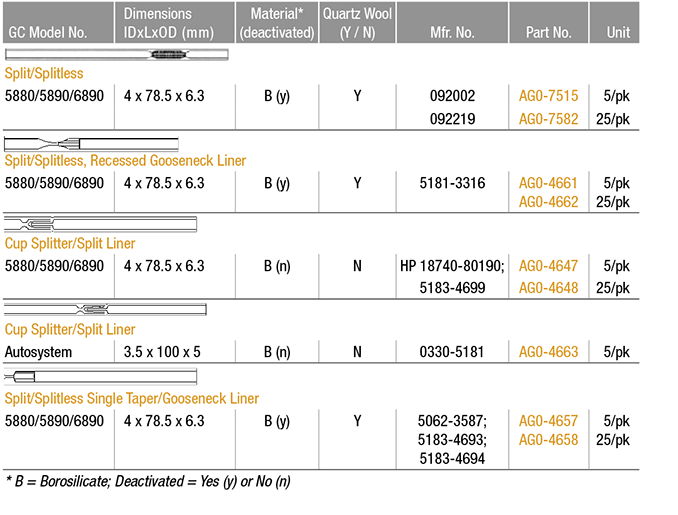Introduction
Poor column lifetime is usually caused by non-volatile or caustic contaminants in the sample damaging the first 4 - 6” of the column. Cutting off the damage portion will usually restore the column performance, but over time performance will degrade to a point where the column can no longer be used. If you are experiencing rapid degradation of column performance, there are several simple ways to help protect your column and increase lifetime.


Liners
The liner is the first line of defense for your column and the style you choose can make a big difference in how much contamination gets onto your column. The easiest thing you can do is to add a small amount of silanized glass wool to a liner, which traps the nonvolatile compounds and prevents them from entering the column. Glass wool will also help catch pieces of your septa that result after repeated injections. Caution: glass wool can also add activity for acids, bases, and pesticides. Activity is the result of free silanol (-OH) groups on the surface of the glass wool that form even after it has been deactivated. Crushing the glass wool can lead to increased activity, so it is recommended to purchase pre-packed liners, rather than try to pack your own. Here are some liners that are available pre-packed with glass wool:

Guard Columns – Standard Guards
Z-Guard columns are 5 or 10m pieces of deactivated tubing that are connected to an analytical column using a glass press-fit connector (Figure 1). The tubing acts like a trap for non-volatile residues that would otherwise damage the stationary phase of your analytical column. Since there is no stationary phase in the Z-Guard, cutting the column does not significantly affect retention times or chromatographic separation. Additional Z-Guards may be attached as necessary, as long as the analytical column is still providing good separation. Since guard columns can also be a source of activity, each Z-Guard is individually QC tested to ensure it is completely deactivated. This added level of quality ensures that you will get the best performance.
 Figure 1. Z-Guard connection using press-fit union
Figure 1. Z-Guard connection using press-fit union




